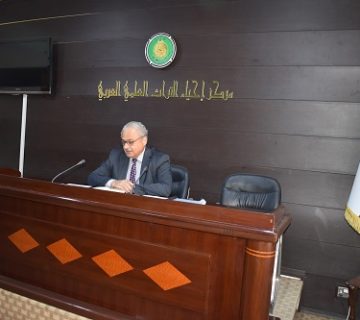Under the supervision of Professor Dr. Laith Majid Hussein, Director of the Center for the Revival of Arab Scientific Heritage at the University of Baghdad,the Center organized a seminar on Monday, 17 November 2025, in Professor Nabeela Abdul Muneem Dawood Hall. The seminar was titled “Geographical Routes in the Ancient Arab World.” The lecture was presented by Assistant instructor Wasan Adel Abdul Wahab, a faculty member in the Center. She discussed how the determination of land and river routes depended on several important natural considerations, including environmental factors such as terrain, climate, and the availability of navigable waterways. Other considerations included the availability of raw materials, the types of commercial goods transported along these routes, and knowledge of long-distance or remote and rugged paths. Trade caravans sometimes relied on local guides who were familiar with these distant and nearby routes. The researcher emphasized that land and river routes were widely used in the hilly, mountainous, and desert regions of Mesopotamia. They were utilized by commercial caravans and military campaigns due to the limited waterways compared to the extensive canal networks in the alluvial plains. In general, the trade caravans followed shorter land routes, such as the route from Larsa to Isin to Ashnuna, and then proceeding toward Assyria.









